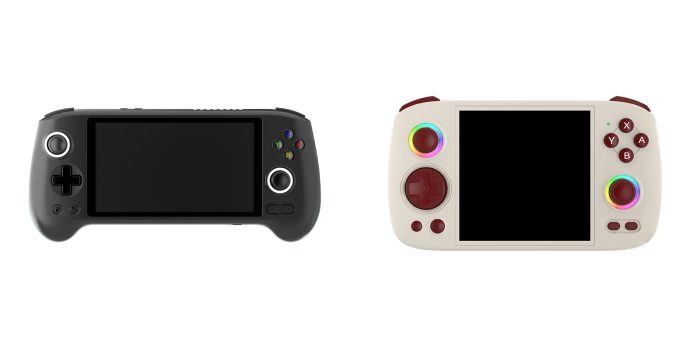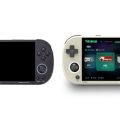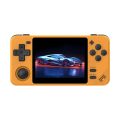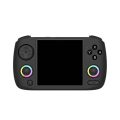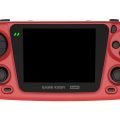If you’re into handheld gaming consoles, you’ve probably come across Anbernic devices. They’re known for quality builds and retro gaming experiences. But today, we’re focusing on two of their latest releases: the Anbernic RG556 and the Anbernic RG Cube. These two Android-based consoles have a lot in common, but they also have enough differences that you might be torn between them. So, let’s break it down to help you figure out which one might be a better fit for you.
Hardware and Performance: What’s Under the Hood?
First things first, both the RG556 and the RG Cube have the same internal hardware. They share 8 GB of RAM and the Unisoc T820 processor, which makes them very similar in terms of overall performance. If you’re someone who plays a wide variety of emulated games, these specs will allow you to run most games smoothly, especially older titles. However, newer games or more resource-heavy emulation—like PlayStation 2 or GameCube—can still push these consoles to their limits.
In terms of performance, there’s really no clear winner here. Both consoles perform similarly in most tasks, and any differences you experience will likely come from software optimization or screen resolution rather than raw hardware power.
Display: AMOLED vs. IPS – Which Is Better?
Here’s where the real difference lies. The RG556 features a 5.5-inch AMOLED screen, while the RG Cube comes with an IPS screen. Personally, I’m a big fan of AMOLED displays because they offer higher contrast and true black colors. There’s something about the way AMOLED screens make games pop that just adds to the experience, especially when playing games with darker visuals or vibrant colors.
On the other hand, the RG Cube’s IPS screen is no slouch, but it doesn’t match the depth of the AMOLED on the RG556. IPS screens tend to look a bit washed out compared to AMOLED, especially in dark scenes where the blacks look more like dark grays.
Now, some people may experience discomfort with PWM (Pulse Width Modulation) on AMOLED screens, which can cause flickering at lower brightness levels. Personally, I don’t notice this at all, but if you’re sensitive to that kind of thing, it’s something to consider.
Button Layout and Design: Personal Preference Matters
When it comes to button layout, both consoles are well thought out, but there are some differences that might sway your decision depending on your play style. The RG556 has backlit sticks, which is a nice aesthetic touch, though it only lights up in white. On the other hand, the RG Cube takes things up a notch with RGB lighting on the sticks, allowing for a wider range of colors. This is more of a visual feature, but it does add some flair to your gaming sessions.
The RG556 also features an ergonomic grip system with well-placed indentations that make it comfortable to hold for long periods of time. The RG Cube lacks these grips but remains comfortable, with a slightly more compact design that makes it easier to transport.
Aspect Ratio and Screen Size
One of the more noticeable differences is in the aspect ratio and screen size. The RG556 uses a standard 16:9 aspect ratio, which means that it works better for modern games and media consumption. Most content will fill the screen naturally, and it just feels more familiar for a lot of gamers.
The RG Cube, on the other hand, has a 1:1 aspect ratio, which is pretty unique and better suited for older retro games, especially those originally made for systems like the Game Boy or older arcade titles. However, for modern games, this square ratio can leave black bars on the screen unless you stretch the image. I’ve tested a few games with the stretched image setting, and honestly, after a while, I stopped noticing the difference. Your brain kind of adapts to it, but if you’re a stickler for native aspect ratios, this might bother you.
Software and Bugs: A Mixed Bag
Here’s where things get a little tricky. From my experience, the RG556 hasn’t received any major software updates since I got it, and there are a few lingering bugs. For instance, every time you restart the console, the button mapping sometimes switches from an Xbox layout to a Nintendo layout, which can be frustrating if you’re not expecting it.
In contrast, the RG Cube received a software update almost immediately after I set it up. While it still has some issues—like the same button layout reset after restarts—the overall software experience has been smoother on the Cube. Key Mapping works perfectly, and I haven’t encountered as many bugs during everyday use.
Battery Life: Who Lasts Longer?
Both consoles are pretty close in battery life, but there’s a slight edge to the RG Cube. The Cube has a 5,200mAh battery, while the RG556 has a slightly smaller 5,000mAh battery. The real difference comes from the fact that the Cube has a smaller screen and lower resolution (720p), which means it drains the battery a bit slower. It’s not a huge difference, but if you’re planning long gaming sessions on the go, the Cube might last a little longer.
Gaming Performance: Especially for PlayStation 2 Games
If you’re planning on playing PlayStation 2 games through emulation, both consoles perform fairly well, but I found that the RG Cube seems to handle them slightly better. This is likely due to the smaller screen resolution, which makes it easier for the console to run demanding games without as much strain. Titles like Need for Speed: Most Wanted run more smoothly on the Cube, although neither console can reach a perfect 60fps in most PS2 games. The Cube’s smaller screen just seems to give it that extra edge in keeping games playable.
Conclusion: Which One Should You Get?
At the end of the day, both the RG556 and the RG Cube are great options for retro gaming fans. If you prefer a larger, AMOLED screen with rich colors and don’t mind a bulkier design, the RG556 is the way to go. It’s great for modern games and media, and the ergonomic design makes it comfortable for long gaming sessions.
However, if you’re after something more compact and better suited for retro games, the RG Cube might be the better choice. Its smaller size makes it more portable, and the unique 1:1 screen can be a plus for certain types of games. Plus, it seems to handle PlayStation 2 games slightly better, which might be important for some users.
